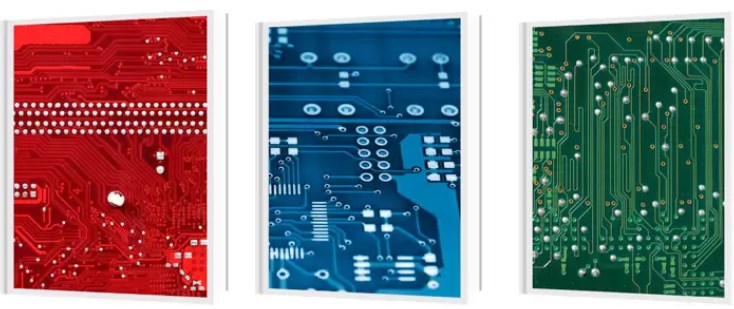OUTLINE:
Super Useful Guide to Choosing the Right PCB Material for Your Circuit Board
 371
371When it comes to designing a printed circuit board (PCB), selecting the right materials is crucial for ensuring optimal performance and functionality. PCB materials have a significant impact on the overall performance of electronic devices, including signal integrity, thermal management, and electromagnetic compatibility. In this comprehensive guide, we will explore the key factors to consider when choosing PCB materials and provide valuable insights to help you make informed decisions.
.jpg)
Understanding PCB Material Selection:
PCB material selection involves evaluating various factors, including electrical properties, thermal properties, mechanical properties, cost, and manufacturing requirements. Let's delve into these factors in detail.
1.1 Electrical Properties:
The electrical properties of PCB materials include dielectric constant, dissipation factor, and electrical breakdown strength. Dielectric constant, also known as relative permittivity, influences signal propagation speed and signal integrity. Dissipation factor measures the energy lost as heat during signal transmission. Electrical breakdown strength signifies a material's ability to withstand high voltages without experiencing electrical breakdown.
1.2 Thermal Properties:
Thermal properties are vital in PCB design to ensure efficient heat dissipation and prevent overheating of components. Coefficient of thermal expansion (CTE) describes how a material expands or contracts with temperature changes. High CTE can lead to stress and reliability issues. Thermal conductivity determines a material's ability to conduct heat away from heat-generating components.
1.3 Mechanical Properties:
Mechanical properties include stiffness, tensile strength, impact resistance, and dimensional stability. PCB materials must withstand external forces, such as vibrations and mechanical stress during assembly and operation. Proper mechanical properties ensure the PCB's structural integrity and longevity.
1.4 Cost Considerations:
Cost is an essential factor in PCB material selection. Different materials come at varying price points depending on their properties and manufacturing processes. It's crucial to find a balance between cost and performance requirements.
1.5 Manufacturing Requirements:
PCB manufacturing processes, such as etching, drilling, and soldering, may impose specific requirements on the chosen materials. Compatibility with manufacturing processes is necessary to achieve successful PCB fabrication.
Several common PCB materials are widely used in the electronics industry. Let's explore some of them:

2.1 FR4:
FR4 (Flame Retardant 4) is a widely used PCB material known for its affordability and versatility. It is a glass-reinforced epoxy laminate material with good electrical insulation properties. FR4 materials are suitable for a wide range of applications, including consumer electronics, automotive, and industrial devices.
2.2 High-Frequency Materials:
High-frequency materials are specifically designed for applications operating at radio frequencies (RF) or microwave frequencies. These materials offer low signal loss, low dielectric constant, and excellent high-frequency performance. Examples include polytetrafluoroethylene (PTFE)-based materials, like Rogers, Taconic, and Arlon.
2.3 Flexible Materials:
Flexible PCB materials provide flexibility, allowing boards to conform to complex shapes and fit into tight spaces. These materials are commonly used in applications requiring flexibility, such as wearable devices, medical equipment, and aerospace applications.
2.4 Metal-Core Materials:
Metal-core PCBs (MCPCBs) feature a metal core, typically aluminum or copper, providing excellent thermal conductivity. MCPCBs are widely used in high-power LED lighting, automotive electronics, and power electronics applications where efficient heat dissipation is vital.
To aid in selecting the right PCB material for your application, follow these guidelines:
3.1 Identify Application Requirements:
Understand the specific requirements of your application, such as operating frequency, power requirements, environmental conditions, and size constraints. This will help you narrow down the suitable material options.
3.2 Consider Signal Integrity:
For high-speed digital circuits or RF applications, prioritize low dielectric constant and low loss tangent to minimize signal distortion and ensure reliable signal transmission.
3.3 Thermal Considerations:
If your application involves high-power components, consider materials with high thermal conductivity and low CTE to effectively dissipate heat and minimize thermal stress.
3.4 Mechanical Durability:
For applications subject to mechanical stress or vibration, choose materials with good mechanical properties to ensure reliable operation and prevent failure.
3.5 Cost Optimization:
Balance performance requirements with cost considerations to achieve the most cost-effective solution without compromising functionality.
Choosing the right PCB material is a critical aspect of successful circuit board design. By considering electrical properties, thermal properties, mechanical properties, cost, and manufacturing requirements, you can find the optimal material for your application. Whether it's the versatile FR4, high-frequency materials for RF applications, flexible materials for wearable electronics, or metal-core materials for efficient heat dissipation, selecting the appropriate PCB material will ensure your circuit board performs reliably and meets your desired specifications.

Disclaimer: The views and opinions expressed by individual authors or forum participants on this website do not represent the views and opinions of Chipsmall, nor do they represent Chipsmall's official policy.

share this blog to:

